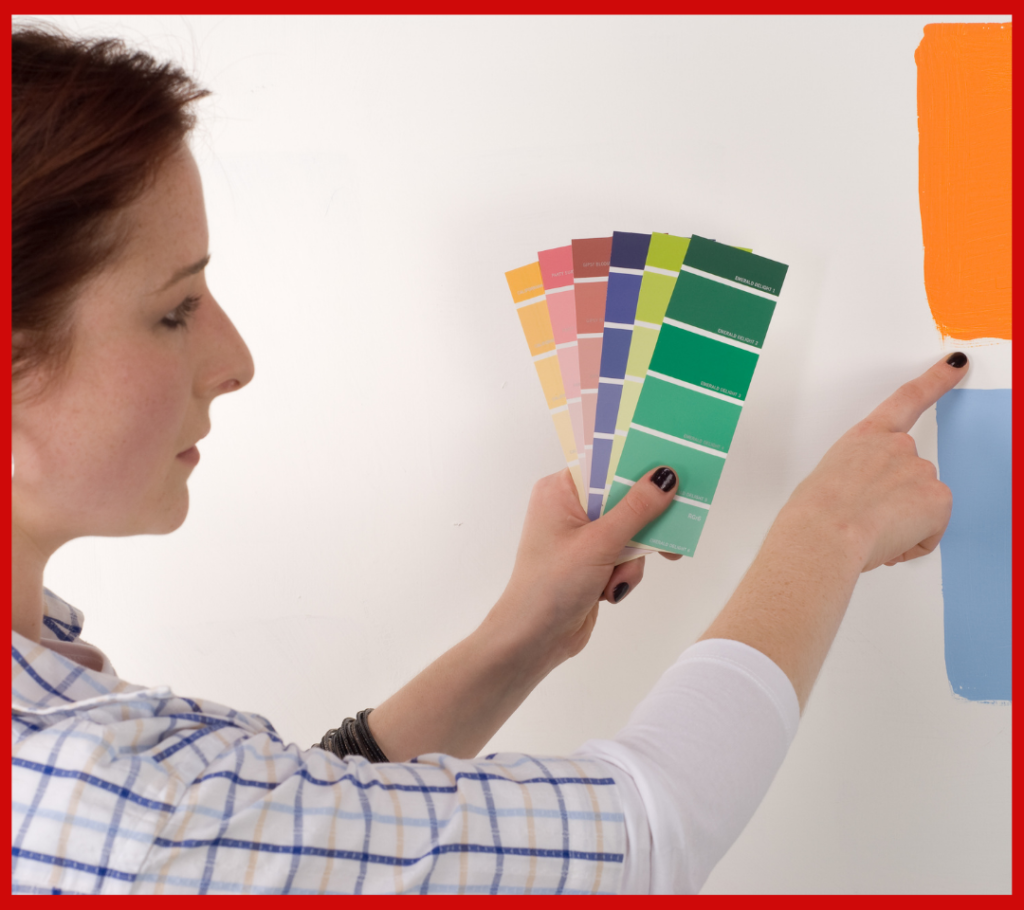Choosing between warm or cool colors for a room can be tricky. Sometimes you need to look at a color’s warmth or coolness to decide whether it’s right for a space. To more easily select the right shade, simply determine whether it is the ground or sky behind an object, and you’ll quickly ascertain if the color is warm or cool.
Once you figure out what you’re trying to create, here’s how to choose a paint color that fits the bill. With the help of some design experts, we came up with a definitive guide to warm vs. cool paint colors—complete with products in the best shades of each color combination to help you decide.
Warm vs. Cool Paint Colors: A Guide on Mixing Colors for a Visual Impact
Warm colors can make a room more exciting and bolder with natural, fun energy. Cool colors are more comforting since they are the colors that give natural vibes. You can now easily determine whether a color is warm or cool by looking at the ground or the sky behind an object. So, let’s add some of the fundamental differences between warm and cool paint colors to our guide list.
Here are some basic approaches to help you choose between warm vs. cool paint colors,

Section 1: Choose The Colors
Choosing colors can be tricky, but it’s less difficult when you take the warmth or coolness into account. Ground colors are those that you see beneath an object—the ground on which a plant grows, for example. Sky colors are at eye level, and the sky is beyond your windows.
Cheryl Casey, an interior designer who owns Cheryl Casey Interiors in Los Angeles, is an American Society of Interior Designers associate.
She says that determining what you’re trying to create with a color combination first will help you choose shades of warm and cool colors that fit the bill. For example, if you want to construct amood, such as serenity or energy, your choice of colors should reinforce that feeling. And if you want to make a space seem larger or smaller than it really is, choosing a color scheme that helps to create that illusion is key.
Section 2: Determine Warm or Cool Tones
Warm colors are usually associated with feelings of warmth, comfort, and happiness. Cool colors are usually associated with feelings of tranquillity, relaxation, and peace.
The color red is a warm color that is often used in kitchens because it stimulates the appetite. The color blue is a cool color that can be used to create a calming effect in an office environment.
This article will provide readers with a unique perspective on the difference between warm and cool colors. We will discuss what defines color as either warm or cool, the benefits, and how to use them in your home.
The first thing to know about warm colors is that they are often associated with feelings of warmth. This can be seen in their names – for example. Reds are typically considered warm because they come from the sun’s rays. Warm colors are often used in kitchens because they can help create a feeling of coziness and comfort. Cool colors are typically associated with feelings of calmness or refreshment. They are often used in bedrooms to help create a relaxing environment that helps you sleep better at night.
Section 3: Identify Your Main Color Tone
Ground vs. sky: When trying to determine whether a hue is warm or cool, ask yourself if it’s the ground or sky behind an object—that will help you figure out whether it’s a warm or cool color. The easiest way to figure this out? Think about how a color looks at sunset. If things look redder and fiercer, they’re likely to warm; they’re probably cool if they take on a cooler quality like blue or green.
Personal preference: Ultimately, whether you prefer one type of color over another comes down to personal taste. But here’s one last tip that can help you narrow your options down: Go with three shades if it’s necessary. You can use gradient colors into a unique one, but sometimes experiments can go wrong, and you may lose your paints without pulling anything. So, at first, know the primary color tone mixes and know how much time it takes to blend.

Section 4: Figure Out Your Secondary Color Tone
Now let’s dig into some products in the best shades of each warm vs. cool paint color scheme that can help to understand your secondary choice under conditions:
Warm Versus Cool Paint Colors:
- Warm colors—yellow, orange, red, and combinations therein—breathe energy, positivity, and a sense of sunshine into any room.
- Cool colors—green, blue, and purple—evoke relaxation and calm. Neutrals like white and grey can also lean warmer or cooler depending on their undertones.
| Warm Neutral Paint Vs. Cool Neutrals Paint Colors | |
| Warm Neutral Colors: Sherwin Williams Canvas Tan Sw 7567Benjamin Moore Ballet White Oc-9Sherwin Williams Creamy Sw 7012Benjamin Moore Navajo White Oc-96Sherwin Williams Accessible Beige Sw 7036Sherwin Williams Balanced Beige Sw 7037Sherwin Williams Kilim Beige Sw 6106Benjamin Moore Grant Beige Hc-83 | Cool Neutral Colors: Paean Black by Farrow & Ball Table Linen by Portola Paints Manchester Tan by Benjamin Moore Navajo White by Benjamin Moore Ammonite By Farrow & Ball Tricorn Black By Sherwin-williamsSterling By Benjamin MooreAmazing Gray By Sherwin-williams |
Section 5: Pick a Dominant Hue from Each Color Field
If you really want to know how to choose warm or cool colors in your home? That’s easy—figure out what you want to achieve, and choose the hue representing it. In fact, making this distinction is a good starting point in general when choosing paint colors for any room. For example, if you want a Cozy, inviting space, you’ll likely go for warmer colors. On the other hand, cooler colors are more commonly found in spaces that need less attention. (Before painting an entire wall, be sure to test a color on a smaller patch first. Once you’ve committed to a larger area of a certain hue, it’s hard to change your mind)
Paint chips are often labeled with a number that indicates the color’s warmth or coolness. It can be helpful to think of these numbers as actual temperatures: A warm color would feel hot to the touch (think 100 degrees), while cool colors would feel cooler (think 50 degrees). The higher the number, the warmer the color is; likewise, lower numbers mean a cooler hue.
Final Term
When considering ‘warm’ vs. ‘cool’ paint colors, it’s helpful to remember that warm colors are generally bolder, more vigorous, and more energetic than cool colors, which are more soothing. Take a quick glance at your home, then read through the guides that are already described earlier—or use the quick reference chart to make your final decision based on the color scheme you’re going for.



